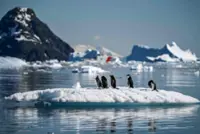An illustration representing a newly discovered landscape in Antarctica labelled as Highland A, with the ice sheet lifted off the land of Antarctica. Scientists revealed on Oct 24 that they had discovered a vast, hidden landscape of hills and valleys carved by ancient rivers that has been ‘frozen in time’ under the Antarctic ice for millions of years. — AFP/Stewart Jamieson, Durham University
Scientists revealed on Oct 24 that they had discovered a vast, hidden landscape of hills and valleys carved by ancient rivers that has been “frozen in time” under the Antarctic ice for millions of years.
This landscape, which is bigger than Belgium, has remained untouched for potentially more than 34 million years, but human-driven global warming could threaten to expose it, the British and American researchers warned.
Already a subscriber? Log in
Save 30% OFF The Star Digital Access
Cancel anytime. Ad-free. Unlimited access with perks.





